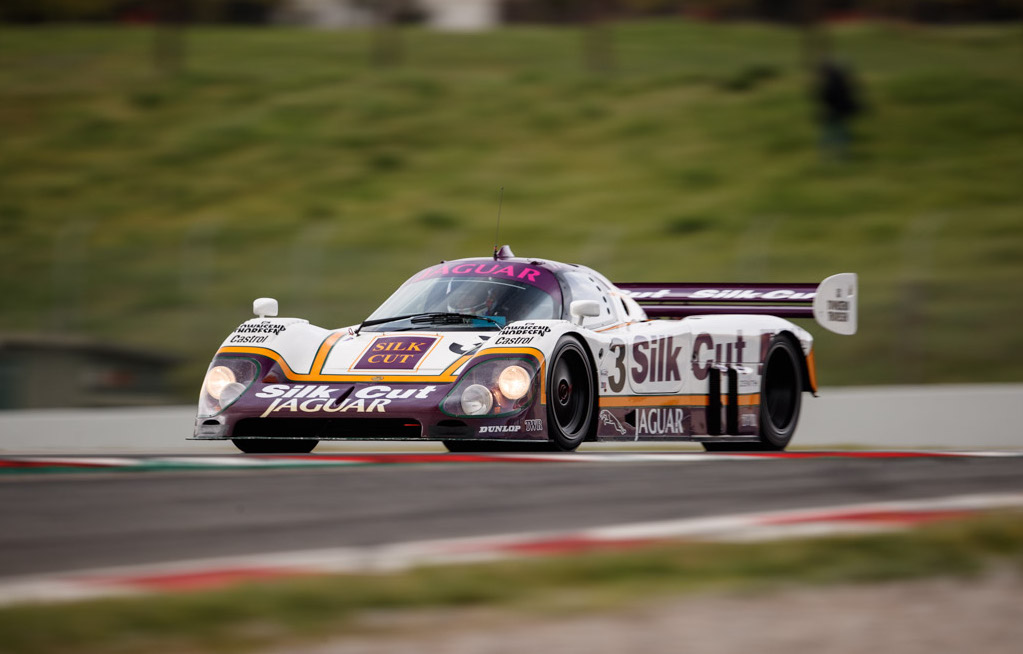1987 Jaguar XJR8

The descriptions of the Classic Cars in the Directory were partly generated or supplemented with the help of artificial intelligence (AI). The content may occasionally not always be entirely accurate or factually correct despite careful checking.
The Jaguar XJR8 of 1987 is a stunning example of the mid-80s era of sports car design. This car is the culmination of the innovative work of Tom Walkinshaw Racing and Jaguar, who teamed up to produce a car that was competitive enough to take on any other car in its class. The XJR8 was developed to compete in the World Sportscar Championship and to do so, it needed to be faster, more powerful and more advanced than any of its rivals. With all its technical features, the XJR8 was able to dominate the sportscar scene in the late 1980s.
The body of the XJR8 was aerodynamically designed to reduce drag and improve overall stability. The sleek lines of the body were complemented by its fiberglass and Kevlar construction, making it a lightweight yet extremely durable machine. The car boasted a modified XJ-S V12 engine that could produce a whopping 720 horsepower. The powerful engine helped the car reach a top speed of 220 mph, quicker than any other car in its class.
The transmission of the XJR8 was a five-speed manual gearbox that was designed by ZF specifically for the Jaguar XJR project. This gearbox was fitted with close-ratio gears to provide maximum acceleration and was mated to a limited-slip differential for better road holding. The car boasted an aluminum motor sport-style fuel tank and a high-performance 4-disc ventilated brake system for superior stopping power.
The suspension system was also designed to keep the car as stable as possible at high speeds. The front suspension was an independent double-wishbone design, while the rear system incorporated a lower wishbone and inverted upper wishbone with coilover shock absorbers. Overall, the suspension system provided excellent handling and responsive steering, allowing the driver to handle the car with ease.
The interior of the XJR8, clad in Connolly leather, was luxurious and comfortable, with power-adjustable seats providing excellent support for long journeys. The dashboard, in keeping with the car's sporting credentials, was clearly laid out, and the controls were easy to reach and functioned well. The car featured air conditioning, power windows, and a high-end Clarion sound system to enhance the driving experience.
The Jaguar XJR8 of 1987 was a formidable machine that dominated the sportscar championship in its day. Its advanced technology, powerful engine, and aerodynamically optimized design, all contributed to its success on the racetrack. Its luxurious interior and comfortable ride make it an ideal car for track days, tours, or even daily use. In conclusion, the Jaguar XJR8 stands as a testament to the engineering prowess of its time, and its technical features still impress sports car enthusiasts nearly 35 years later.
Milestones
- Introduction of the Jaguar Racing XJR8 at the Paris Motor Show in 1987 - Powered by a 7.0L V12 engine producing 701 horsepower - Debuted at the 24 Hours of Daytona in 1988, finishing 1st, 2nd, and 3rd in the GTP class - Won the 24 Hours of Le Mans in 1988 with Jan Lammers, Johnny Dumfries, and Andy Wallace behind the wheel - Also claimed victories at the Brands Hatch 1000km, the Jerez 1000km, and the Spa 1000km in 1988 - Competed in the IMSA GT Championship in the United States, winning five races in 1988 - At the end of the season, retired from competition and replaced by the Jaguar XJR9.Technical
- Engine: 6.0L V12 DOHC - Power output: 550 horsepower - Max speed: 220 mph - 0-60 mph time: 3.4 seconds - Gearbox: Five-speed manual transmission - Weight: 1,850 kg - Suspension: Independent double wishbones with coil springs and dampers - Brakes: Ventilated discs with four-piston calipers - Wheelbase: 2,667 mm - Track: 1,620 mm (front), 1,525 mm (rear) - Body material: Carbon-fiber and Kevlar composites - Aerodynamics: Advanced aerodynamic design with a low drag coefficient - Interior: Race-spec cockpit with bucket seats and full dash instrumentation - Competition history: Competed in the World Sportscar Championship and won the 1987 Le Mans 24 Hours race.